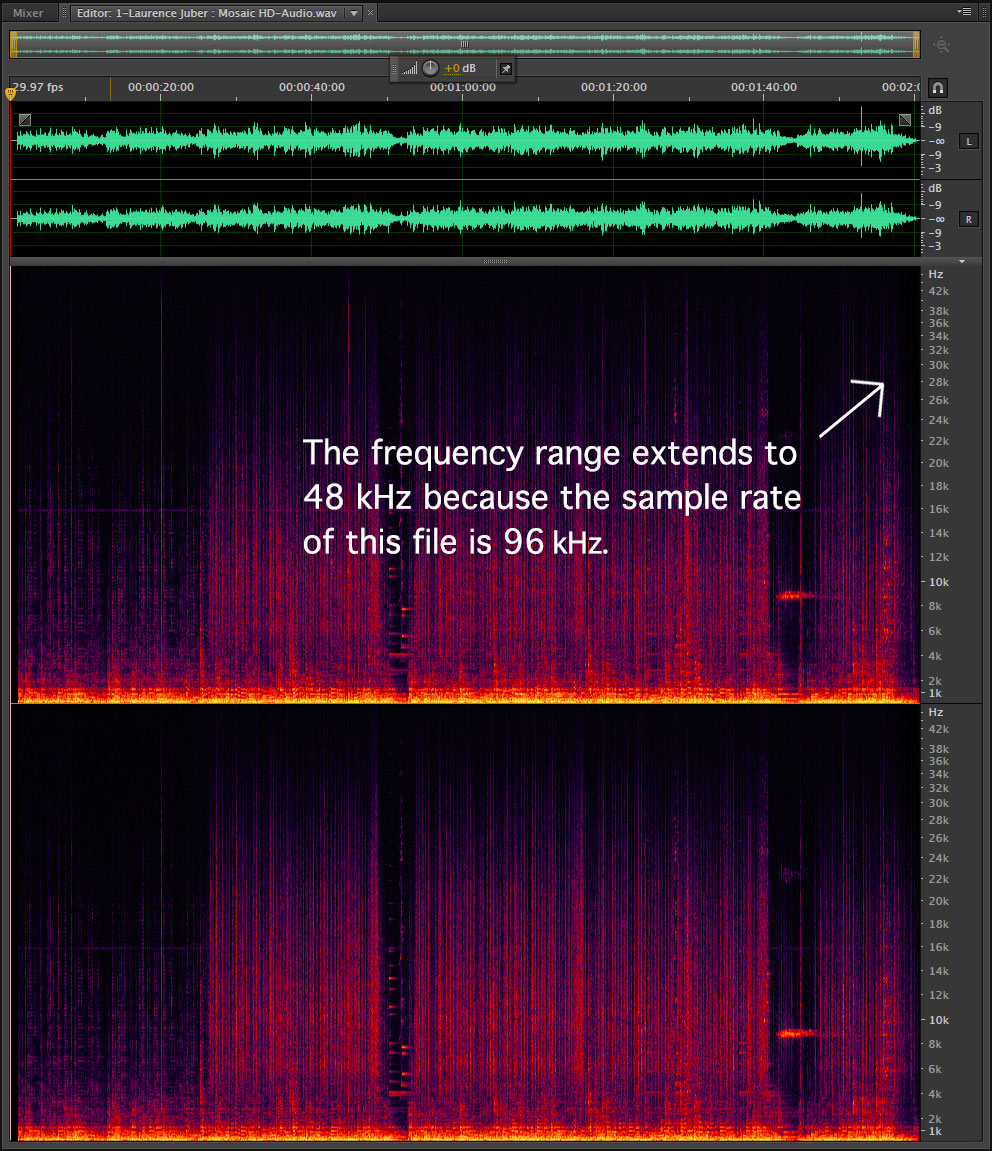A Question Answered
One of my readers asked the following question on Thanksgiving.
Hi Mark, If I have a master with dynamic span at 90dB and frequency range between 20-20000Hz would it be possible to tell or hear the difference between 16/44.1 2-ch and 24/96 2-ch?
The answer is pretty straightforward. The specifications above place a fixed box around the fidelity of the recording in question. The maximum frequency is 20 kHz and the dynamic range 90 dB. If we know that a sample rate of 44,100 Hz can flawlessly capture frequencies up to 22.050 kHz (according to the Nyquist Theorem) and there are 6 dB of dynamic range (SNR) per bit, then the answer is clear. A listener would not be able to tell the different between that file played back in CD resolution vs. HD specs.
But there’s more to it than that. We’ve already seen that music doesn’t care about the digital sample rate. There are many instruments that produce large amounts of energy above the traditional threshold of human hearing. Just look at some of the spectragrams that I’ve posted over the past couple of months. I’ve posted the plot for a track from Laurence Juber’s track “Mosaic” once again.
Figure 1 – The spectragram of LJ’s Mosaic track showing lots of ultrasonic content. [Click to enlarge]
If we were to produce the proposed music segment and recognized that it has no frequencies above 20 kHz, there had to be reason why the ultrasonics aren’t present. Let’s take a look at the various production stages and see what might have caused the roll off.
Perhaps the equipment used during the recording wasn’t able to capture frequencies higher than 20 kHz. This is perfectly reasonable. Microphones aren’t all capable of responding to frequencies above 20 kHz. After all, if you were the designer/manufacturer of high quality microphones, you wouldn’t put all sorts of extra effort (dollars) into getting one more octave out of your design if it didn’t matter to our ears.
The specifications of the recording equipment might lack that ability to capture frequencies above 20 kHz. The norm in multitrack studios using Pro Tools has been to use 44.1 or 48 kHz sample rate. This essentially limits the maximum frequency to around 20 kHz. DSD 64 falls apart above 20 kHz because of the noise shaping required to maintain sufficient dynamic range in the “audio band”.
The playback devices themselves might apply a low pass filter to prevent any ultrasonic frequencies to sneak through. This is true to the output stages of a standard definition DAC and SACD player.
So it is completely possible that an individual track would be limited to 20-20 kHz and 90 dB of dynamic range. But music is capable of exceeding these limits AND we have equipment to handle this increased fidelity.
I’m convinced that ultrasonics contribute to the overall sound of a well-recorded high-resolution audio track. Visit the FTP site and download the HD version of Laurence Juber’s “Mosaic” track AND the 44.1 / 16-bit downconversion of exactly the same master. Take a listen and see if you can detect any difference between the standard definition track and the HD track. You will need exceptional speakers of a set of headphones that can deliver frequencies beyond 20 kHz.
I’ll be very interested to hear your thoughts.


